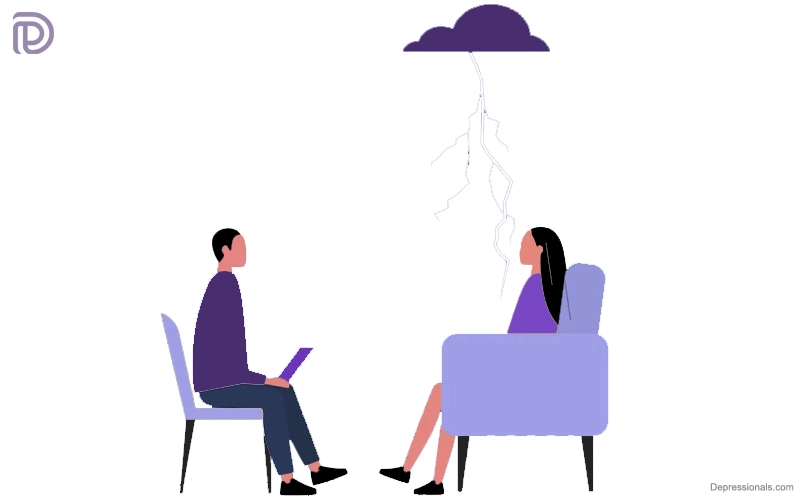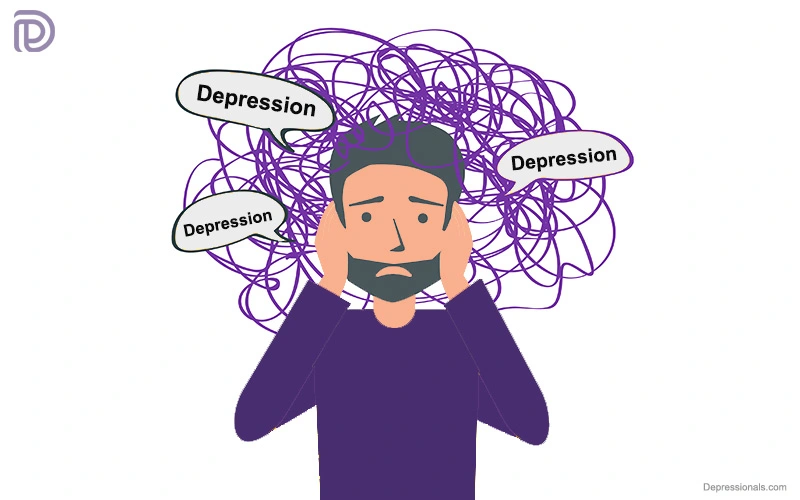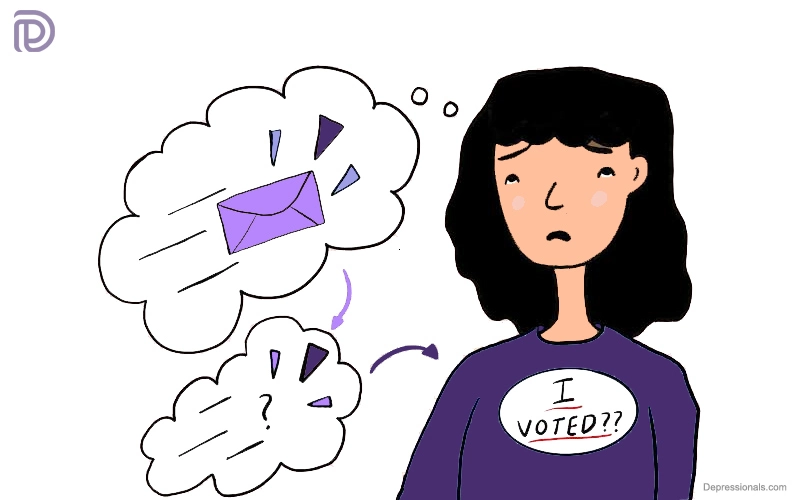What is disruptive mood dysregulation disorder?
Disruptive mood dysregulation disorder (DMDD) is a childhood disease marked by extreme rage, impatience and frequent temper outbursts.
Tantrums are a natural part of growing up. Many parents become adept at anticipating situations that may cause their children to have an emotional outburst. If your child has tantrums that are out of proportion, difficult to control or occur on a regular basis, you should have him or her evaluated for disruptive mood dysregulation disorder (DMDD).
DMDD is a kind of mental disorder. Only children are usually diagnosed with it. Irritability, emotional dysregulation and behavioral outbursts are the most common symptoms. Temper tantrums are the most common form of outburst.
In 2013, the condition was implemented. It was defined in the fifth edition of the Diagnostic and Statistical Manual of Mental Disorders by the American Psychiatric Association (DSM-5). DMDD was created as a diagnosis to help prevent children from being overdiagnosed with bipolar disorder.
Related: Childhood Depression
Symptoms of DMDD
Disruptive mood dysregulation disorder is a kind of depressive disorder. The clinically substantial deterioration in mood is a characteristic shared by all depressive illnesses. A person’s mood can be defined as their internal emotional experience.
The mood disruption in DMDD is manifested in others as anger and irritation. The following are the key disruptive mood dysregulation disorder symptoms that distinguish it from other psychiatric disorders:
Severe temper tantrums: These may be vocal (yelling, shouting) or behavioral (hitting, kicking, physical aggression toward people or things).
Temper tantrums that aren’t typical for a child’s age: It’s not unusual for toddlers to cry or older children to scream when they don’t get their way. The tantrums in DMDD aren’t what you’d expect for a child’s developmental level in terms of frequency and severity of episodes. You wouldn’t expect an 11-year-old to regularly destroy property when he or she is angry, for example.
Outbursts happen three or more times each week on average: this isn’t a hard-and-fast rule. A kid would not be disqualified for diagnosis if he or she had two tantrums in a week, but most children have more than two.
Irritable and furious mood between tantrums: Even when the kid isn’t having an outburst, caregivers will notice a mood shift throughout most of the day, almost every day. To prevent an episode, parents may feel as if they are “stepping on eggshells” on a daily basis.
Tantrums may occur in a variety of circumstances: DMDD may not be the appropriate diagnosis if a kid only experiences outbursts in certain situations, such as with one parent or one caregiver. Symptoms should be present in at least two contexts, such as at home, at school or among friends, in order to be diagnosed.
In addition to the symptoms listed above, diagnosis necessitates:
- For a year, the mood disruption has been present most of the time.
- The child is between the ages of 6 and 17. Before or after this age range, no diagnosis is made.
- Before the age of ten, the symptoms were evident.
Finally, DMDD will only be diagnosed if the tantrums aren’t caused by another condition, such as autism spectrum disorder, developmental disabilities, or the effects of substance abuse.
Related: Teen Depression
DMDD vs. Bipolar disorder
DMDD was created to address what psychiatrists and psychologists considered to be an overdiagnosis of pediatric bipolar disorder. The occurrence of manic or hypomanic episodes is a fundamental characteristic of bipolar disorders.
A period of elevated, expansive, or irritable mood is referred to as a manic episode. In addition, a person’s goal-directed activity or energy level rises. Hypomanic episodes differ from manic episodes in that they are less severe. Manic episodes do not always occur in people with bipolar disorder. They aren’t a regular part of their day-to-day operations.
Irritability can be caused by both DMDD and bipolar disorders. Even when full-fledged tantrums aren’t present, children with DMDD tend to be irritable and angry all of the time. Manic episodes come and go for most people.
You might wonder if your child seems to be in a bad mood all the time or if their mood is out of the ordinary. They could have DMDD if it’s persistent. If their behavior is unusual, their doctor may suspect bipolar disorder.
Irritability is also a prominent feature of DMDD, while mania can include:
- Euphoria or extreme positive emotion
- Extreme excitement
- Sleeplessness
- Goal-directed behavior
Differentiating bipolar and DMDD isn’t always simple and must be assessed by a professional. Consult your child’s doctor if you notice either of these symptoms.
Related: Bipolar 1 Disorder
Risk factors of DMDD
Over 3,200 children between the ages of 2 and 17 were studied, and between 0.8% and 3.3% of them met the criteria for DMDD. Some research suggests that DMDD is more common among children than teenagers.
There is still research into specific risk factors for this condition. Children with DMDD could have temperamental threats, and at a young age seemed to be more vulnerable to:
- Difficult behavior
- Moodiness
- Irritability
- Anxiousness
They might well have previously met diagnostic standards for:
- Oppositional defiant disorder
- Attention deficit hyperactivity disorder
- Major depression
- An anxiety disorder
Having a loved one with a mental illness raises your risk. DMDD is more commonly seen in boys. There is also an increased risk of:
- Family conflict
- Social difficulties
- School suspensions
- Live in economically stressful situations
Related: Double Depression Disorder
Looking for guidance
If you suspect your child or a loved one is suffering from this disorder, you should seek professional help. Consulting your family doctor might be the first step. A professional, such as a psychiatrist or psychologist, can be referred to you. A formal assessment can be conducted by the specialist. They can assessments at a hospital, a private off or a specialized clinic.
Check your nearest: Mental Help Resources
DMDD Diagnosis
A medical doctor, nurse practitioner or psychologist may diagnose DMDD. Diagnosis is only completed based on an evaluation.
The evaluation should include an interview with caregivers as well as an observation or meeting with the kid. The evaluation may include school visits, standardized questionnaires and interviews with teachers or other caregivers.
Read: Economic Depression
Treatment of DMDD
Psychotherapy, behavioral treatments, medicine or a combination of the two may be used to help children with DMDD. Non-pharmaceutical therapies should be tried initially. Disruptive mood dysregulation disorder treatments aren’t always suited to DMDD. For different mental issues in children, there are a number of methods that are frequently utilized.
Psychotherapy and behavioral techniques
Parents and children meet with a therapist once a week to focus on establishing healthier ways of connecting to one another through psychotherapy. Individual treatment, such as cognitive behavior therapy, may help older children learn to think about and react to events that distress them more successfully. Other methods focus on encouraging parents to create the best successful parenting practices.
Related: How to Get Out of a Depressive Episode
Medication
Children’s emotional and behavioral issues are treated with a range of medicines. A psychiatrist should be consulted about these issues. Antidepressants, stimulants and atypical antipsychotics are among the most often prescribed medicines.
An essential factor to consider while treating
The most effective treatments for all emotional and behavioral issues in children include parents and other caregivers. Because DMDD has an impact on how children interact with their families, friends, and other adults, it’s important to take these aspects into account while treating them.
Related: How to Overcome Depression
Outlook for DMDD
If left untreated, DMDD may progress to non-bipolar or anxiety disorders or unipolar depression in late adolescence and adulthood. The greatest results occur when evaluation and intervention begin as early as possible in all mental health problems in children. If you suspect your kid has DMDD or a similar disease, don’t hesitate to seek expert help right away.






Hey there, You have done an incredible job. I will certainly
dig it and personally suggest to my friends. I am confident
they will be benefited from this web site.
Excellent blog right here! Additionally your website loads up very fast!
What web host are you the use of? Can I am getting your associate hyperlink in your
host? I wish my website loaded up as quickly as yours lol
Greetings I am so happy I found your blog, I really found you by error, while I was looking on Ask Jeeves for something else,
Anyhow I am here now and would just like to say many thanks for a
fantastic post and all round enjoyable blog (I also
love the theme/design), I don’t have time to read through it all at the minute but I have bookmarked it
and also included your RSS feeds, so when I
have time I will be back to read more, Please do keep up
the excellent job.
Wow, this paragraph is good, my younger sister is analyzing such things, tnus I am going to convey her.
This design is incredible! You certainly know how to keep a
reader amused. Between your wit and your videos, I
was almost moved too start my own blog (well, almost…HaHa!) Excellent job.
I really enjoyed what you had to say, and more than that, how you presented it.
Too cool!
Great post. I was checking constantly the blog and I’m impressed!
Very useful info specifically the last part 🙂 I care for such
information a lot. I was looking for this particular info for a
very long time. Thank you and best of luck.
Great tremendous things here. I am very happy to look your post. Thank you so much and i am taking a look ahead to touch you. Will you kindly drop me a mail?
Perfect piece of work you have done, this internet site is really cool with great info .